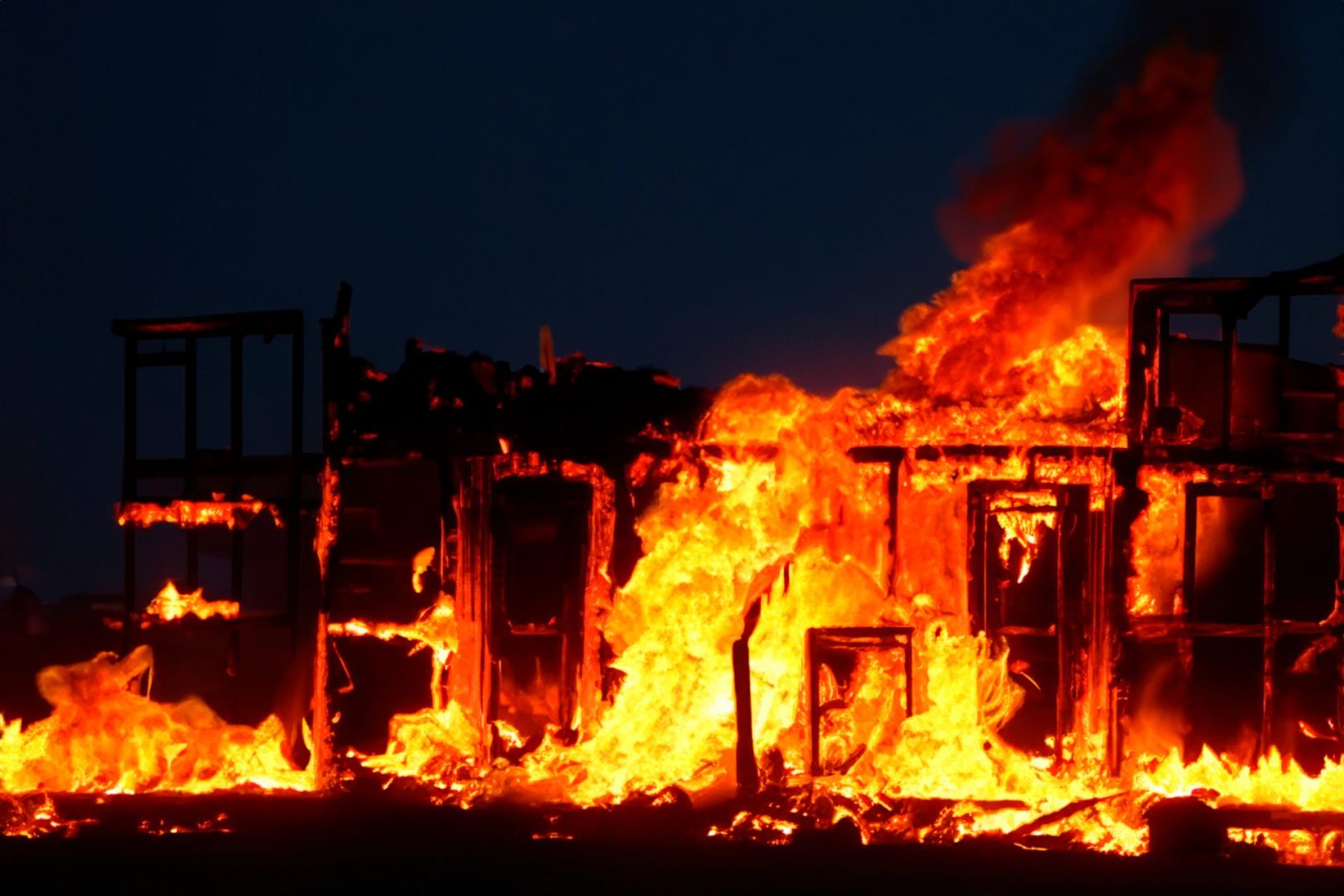The orange glow on the horizon isn’t a sunset, and that smell of smoke isn’t from someone’s backyard barbecue. When a wildfire is heading toward your area, every decision you make in the next few hours could literally mean the difference between life and death. This isn’t the time for denial, hesitation, or hoping things will work out on their own.
Wildfire emergencies move faster than most people realize, and the window for safe evacuation can close with terrifying speed. What seems like a distant threat can become an immediate danger in minutes when wind conditions change or the fire finds new fuel sources. The people who survive these situations are those who act decisively based on solid information rather than wishful thinking.
Understanding what to do when wildfire threatens isn’t just about following a checklist – it’s about making smart decisions under pressure while managing the panic and confusion that naturally occur during life-threatening emergencies. The right knowledge and preparation can save your life and the lives of people you care about.
Get reliable information immediately
When you first become aware of a wildfire threat, your absolute priority is getting accurate, up-to-date information about the fire’s location, direction, and speed. Social media rumors, neighbor speculation, and general news reports aren’t sufficient when your life is at stake.
Monitor official emergency channels including local emergency management, fire department communications, and official government emergency alerts. These sources provide the most accurate information about evacuation orders, road closures, and safety recommendations specific to your exact location.
Sign up for emergency alert systems in your area if you haven’t already, and make sure your phone settings allow emergency alerts to come through even when your phone is on silent. These alerts often provide the first official warning that evacuation is necessary.
Weather conditions dramatically affect wildfire behavior, so pay attention to wind speed, direction changes, and humidity levels. Fires can change direction and intensity rapidly when weather conditions shift, sometimes making previously safe areas dangerous within minutes.
Evacuate immediately when ordered
When authorities issue evacuation orders for your area, leave immediately without hesitation or delay. Evacuation orders are based on professional assessment of fire behavior and aren’t issued lightly. People who wait to see if the situation improves or try to protect their property often find themselves trapped in life-threatening situations.
Don’t wait for the fire to be visible from your home before taking evacuation seriously. By the time you can see flames or heavy smoke, it may already be too late to evacuate safely. Fire moves much faster than most people expect, especially when driven by wind or moving through dry vegetation.
Have multiple evacuation routes planned in advance because fires can block roads quickly and unexpectedly. Know at least two different ways to leave your area, and be prepared to take whichever route remains open when you need to evacuate.
Leave early in the evacuation process rather than waiting until the last minute. Roads become congested as more people try to leave, and emergency vehicles need clear access to reach areas where they’re needed most.
Prepare your evacuation kit in advance
Don’t wait until a fire is approaching to gather the essential items you’ll need during evacuation. Have an emergency kit prepared and easily accessible so you can grab it and leave within minutes of receiving evacuation orders.
Your evacuation kit should include important documents like identification, insurance papers, medical records, and financial information in a waterproof container. Include prescription medications, enough for at least a week, along with copies of prescriptions in case you need refills while evacuated.
Pack essential clothing for several days, including sturdy shoes, protective clothing, and items appropriate for changing weather conditions. Include personal items like eyeglasses, contact lenses, hearing aids, or other medical devices you can’t function without.
Don’t forget about pets – have carriers, leashes, food, water, and any medications your animals need ready to go. Many evacuation shelters don’t accept pets, so identify pet-friendly accommodations or friends who can house your animals during evacuations.
Protect your home if time permits
If you have time before evacuating and it’s safe to do so, take quick steps to make your home more likely to survive the fire. These actions should take no more than a few minutes and shouldn’t delay your evacuation.
Close all windows and doors to prevent embers from entering your home. Remove lightweight, flammable items from around your house including patio furniture, door mats, and decorations that could catch fire and spread flames to your home.
Turn off propane tanks and move them away from your house if possible. Shut off natural gas at the meter if you know how to do so safely. Turn on lights inside your home to make it more visible to firefighters in heavy smoke.
Connect garden sprinklers to your roof if you have them, and fill any large containers with water. These measures might help protect your home, but don’t spend so much time on home protection that you delay your evacuation.
Drive safely through smoke and chaos
Evacuating during a wildfire often means driving through heavy smoke, congested roads, and chaotic conditions that require special driving techniques and extreme caution to navigate safely.
Keep your headlights on and drive slowly when visibility is reduced by smoke. Stay in your lane and maintain safe following distances because other drivers may be panicking or making poor decisions under stress.
Keep your windows closed and use recirculated air to minimize smoke inhalation while driving. If smoke becomes too thick to drive safely, pull over in a safe location, turn on your hazard lights, and wait for conditions to improve rather than continuing blindly.
Have backup routes planned and be prepared to change direction if your primary evacuation route becomes blocked by fire, fallen trees, or emergency vehicles. Stay calm and follow traffic control instructions from emergency personnel.
If trapped, shelter in place safely
If evacuation becomes impossible because fire has cut off escape routes, you may need to shelter in place until conditions improve or rescue arrives. This requires quick thinking and knowledge of how to create the safest possible environment.
Move to the most fire-resistant part of your home, typically an interior room on the lowest floor with few windows. Fill bathtubs, sinks, and containers with water for drinking and fire suppression. Wet towels and blankets to place over yourself if fire threatens your immediate area.
Stay low to avoid smoke inhalation, and cover your nose and mouth with damp cloth. Monitor emergency radio broadcasts for updates on conditions and rescue operations. Signal for help using bright cloth, mirrors, or other visible methods if rescue personnel are in the area.
If your home catches fire and becomes untenable, move to an open area away from vegetation and structures. Lie flat and cover yourself with wet blankets or clothing to protect against radiant heat and embers.
Know the danger signs of approaching fire
Recognizing the signs that fire is getting dangerously close allows you to take protective action before the situation becomes immediately life-threatening. These signs often appear before flames are visible.
Heavy smoke that’s getting thicker and darker indicates fire is approaching. Pay attention to the direction smoke is moving, as this shows where the fire is traveling. Smoke that suddenly changes direction suggests wind shifts that could bring fire toward you rapidly.
Falling ash and embers indicate that fire is close enough to be a direct threat. Large embers can travel miles ahead of the main fire and start new fires, so their presence means immediate danger even if flames aren’t visible.
Animals fleeing an area often provide early warning that fire is approaching. Wild animals and livestock will evacuate areas before human residents realize the danger, so pay attention to unusual animal behavior and movement patterns.
After the immediate threat passes
Once you’ve evacuated safely or the immediate fire threat has passed, continue following official guidance about when it’s safe to return home. Don’t attempt to return until authorities declare the area safe, as fires can rekindle and hazards like downed power lines may remain.
If your home survived, inspect it carefully for damage before entering. Look for structural damage, gas leaks, electrical problems, and other hazards that might make the building unsafe even if it wasn’t directly burned.
Document any damage with photographs for insurance purposes, but don’t enter damaged structures until they’ve been professionally inspected. Be aware that even homes that appear undamaged may have hidden problems from heat exposure or smoke damage.
Preparation saves lives
The best time to prepare for wildfire evacuation is long before any fire threatens your area. Develop and practice evacuation plans with your family, maintain emergency supplies, and stay informed about fire risks in your region.
Create defensible space around your home by removing flammable vegetation and materials. Install fire-resistant landscaping and building materials when possible. These preparations won’t guarantee your home survives, but they significantly improve the odds.
Stay informed about fire weather conditions during high-risk seasons, and be mentally prepared to evacuate quickly when conditions deteriorate. The people who survive wildfire emergencies are those who take threats seriously and act decisively when danger approaches.
Remember that homes and possessions can be replaced, but lives cannot. When in doubt, evacuate early and stay safe rather than taking risks to protect property that may not be salvageable regardless of your efforts.


















